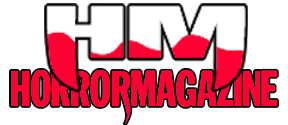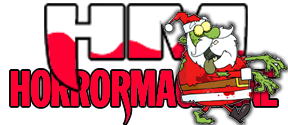A deep humanistic culture of european style, a well rooted and astonishing fantasy which was cultivated from his childhood - when he lived near a forest-like park which in ancient times was inhabited by an Indian tribe and, in recent times, by a mystic hermit… surely a fantastic place to be explored by a child – and some touches that can be pleasantly naïve are the basis of Jason Van Hollander’s artistic universe.
Though still not well known in Italy, this artist from Philadelphia – where he was born in 1949 – during his career as illustrator collected many prestigious acknowledgements such as the World Fantasy Award, for best artist, in 2000 and 2004, and the International Horror Guild Award and he is esteemed and kept as a friend by many important figures in the literary world and he is particularly tied to Thomas Ligotti by mutual admiration and friendship.
As an artist, Jason was fascinated from his childhood by such artists as Hieronymus Bosch and Pieter Bruegel – who can both be easily tied to horror and grotesque art – or such writers as H.P. Lovecraft and all these influences give life to a very colourful and original universe sharing the quality of a fairy tale full of action and movement.
In Van Hollander’s own words, “I love Bruegel. But Walt Disney is an important inspiration. The influence of Disney permeated the world of my childhood. His influence is often dismissed as kitsch… but it provided a kind of imaginative infrastructure for my generation. Snow White,

Pinocchio, Darby O’Gill and the Little People . . . and the majestic “Night On Bald Mountain” sequence in Fantasia are examples of how Disney and his team enriched the classic fairy tale paradigm . . . where beauty and the grotesque are blended together”.
Fantasy has always been a refuge, a shelter as he gradually succumbed to
a chemical imbalance known as agoraphobia which made, and still makes, impossible for him to travel far from his home.
The college years, many miles away from his home, were really hard as he suffered constant anxiety: “My four years in college were a complete waste of time because I was burdened with personal anxiety and the anxiety from ignorant, unsympathetic instructors”, Jason says.
Now, Jason Van Hollander can be considered as a successful artist, but still he never quits experimenting and looking for new forms of expression. His greatest dream is the chance to publish his works in
Europe because “American publishers seem conservative, and seem preoccupied with marketing and sales. Perhaps this influences American illustration, which often seems unintellectual and unadventurous (except for comic books). European illustrators are more original and imaginative than American illustrators”.
We are proud to publish a short interview in which Jason Van Hollander talks about himself and his artistic universe.
When and why did you decided to work as an illustrator?
I was under the influence of H. P. Lovecraft when I was a teenager. I collected Arkham House books. The dustjacket covers were beautiful and contained macabre images. This was the kind of artwork I was trying to create . . . but I was only an adolescent and my skills were not sufficient. Over the years my artistic skills developed. In 1976 I sent Arkham House photographs of my watercolor paintings (these were very macabre). Within a few weeks the editor of Arkham House (James Turner) contacted me and gave me art assignments. Creating artwork for Arkham House was the fulfillment of a dream.

The Lovecratian path is always important. The Americans have a term--"trail-blazer"--which means the person who is the pioneer, the explorer, the path-finder, the guide who shows us the correct way. Lovecraft, rather than Poe, is usually our first and most important guide to the literature of horror. Lovecraftian dramas (and monsters) are enormously successful for the imagination . . . but are less successful for the eye. That's because the imagination is boundless--infinite. The eye is smaller than the imagination. The eye feeds on specific images and exactitude. The eye is cynical about images that are too challenging . . . and rejects anything that seems preposterous. So artists and illustrators must gently persuade the eye, by presenting images that engage the intellect and the spirit. This is achieved through subtle suggestion . . . through lyricism . . . and through irony, and through absurdity. Visual depictions of Lovecraftian monsters do not truly engage the intellect and the spirit.
It seems you have had quite a mixed influence all over the years but who are actually the most important authors in the developing of your work?
Authors have a resonance for me if their orientations are visionary or morbid. All of my intellectual and moral concerns are intertwined with these orientations. For this reason I'd have to say that the stories of Thomas Ligotti are ideal. We've collaborated on projects several times. His fiction is a treasure-trove of spatial and architectural difficulties and the dilemma of Existence (which mirrors the triune aspects of my anxiety). Ligotti's moral vision is not properly appreciated. Bruno Schulz and Stefan Grabinski must be mentioned. Mervyn Peake, William Hope Hodgson (and, recently, China Miéville) are also important to me. And there is always the poetry of Thomas Lovell Beddoes.
In your artworks I found a deeply interesting crossover between horror and fantasy. Do you agree with this feeling of mine and if yes, which is the main reason for this crossover?
The commonality is my yearning for beauty, which I can only experience in terms of the Grotesque. The Grotesque is a bridge that spans categories. The categories don't really matter. The grotesque is a grimace . . . an expression of tension, like the distorted features of someone who is expressing anger or fear or passion. The Grotesque is the heightened, crystalized poetry of anguish. The Grotesque is the purest distillation when Beauty and Anxiety are mingled.
When planning the dustjacket of a book, or the illustrations for some novel or
short story, which are the aspects of the plot that attract you the most?
I recently explained to Matt Cardin that I am not really an "illustrator" because I do not accept assignments if I have no sympathy for the author's work. Matt, fortunately, is an author whose work I respect. I created artwork for a book he wrote (Divinations of the Deep, published by Ash-Tree Press). When I accept an assignment I am looking for a certain kind of shared creative vision. There must be consanguinity... kinship. After I read the book (or story) I conduct research and make sketches. I resist "narrative" visual solutions and prefer to create images that are emblematic. An emblematic visual solution provides a broader range of possibilities than a single incident. And this method usually provides more potential for expressivity.
Who is/are the writer/s you like the best to work with or for?
Thomas Ligotti, because he lives in a universe of distortion that is identical to my own distorted universe. For this same reason I would enjoy creating artwork for anything written by China Miéville. My life's work is to create beautiful images of architectural distortion, spatial distortion, emotional distortion, and spiritual distortion.
In your Colloquy with Mr. Thomas Ligotti you have spoken widely about grotesque, why do you think people can be so fascinated by the grotesque aspects of life? And which are, to your opinion, the main differences between grotesque and absurd?
People have an imperfectly understood relationship to the Grotesque. But it is, after all, part of the human experience. I believe that the Grotesque refers to anxiety and anguish--it is a lyrical response to emotional discomfort. Absurdity, in its purest most abstract state, is philosphical and intellectual.
You seem to be a man of a deep, humanistic, European culture: where does this evident influence come from?
Because of a lifetime of emotional suffering I am désabusé. Disabused. Europeans invented this concept because the World Wars destroyed their homes and their certainties. Most Americans live in a cocoon of certainties known as The American Dream.

I can comment on movies that are intentionally "grotesque": Fellini, who was also a cartoonist, populated his movies with grotesque characters. Perhaps "Casanova" was his masterpiece of the Grotesque. Certainly, the "Never Bet The Devil Your Head" portion of his film "Spirits of the Dead" is supremely grotesque. Mario Bava, another great Italian director, filled his movies with grotesque characters and incidents (e.g., "Black Sabbath; "Black Sunday"; "Planet of the Vampires", etc.). "Suspiria" by Dario Argento is a wonderful movie enriched with grotesque architectural details. If there is a Japanese Butoh movie I would like to see it.
I know this is a question you have probably answered to a thousand times, but have you got any advice for young people who would like to work in such a difficult field as yours?
It is important to discover the master artists of this tradition . . . the morbid brethren obsessed with the horrific and the hallucinatory: Sidney Sime, Lee Brown Coye, Frank Utpatel, Harry Clarke, Fuseli, Bruegel, Bosch, Teniers, Monsú Desiderio, Samuel Palmer, Rodolphe Bresdin, Atkinson Grimshaw, Alfred Rethel, Charles Meryon, Alfred Pinkham Ryder, and many others.
Whose are your main projects for the future?
My plans include a new series of Hell Stamps, which are limited-edition prints. But more than anything else I want to create one very detailed painting, an involvement that requires my full attention for an entire year, to the exclusion of all other projects.



















Aggiungi un commento
Fai login per commentare
Login DelosID
